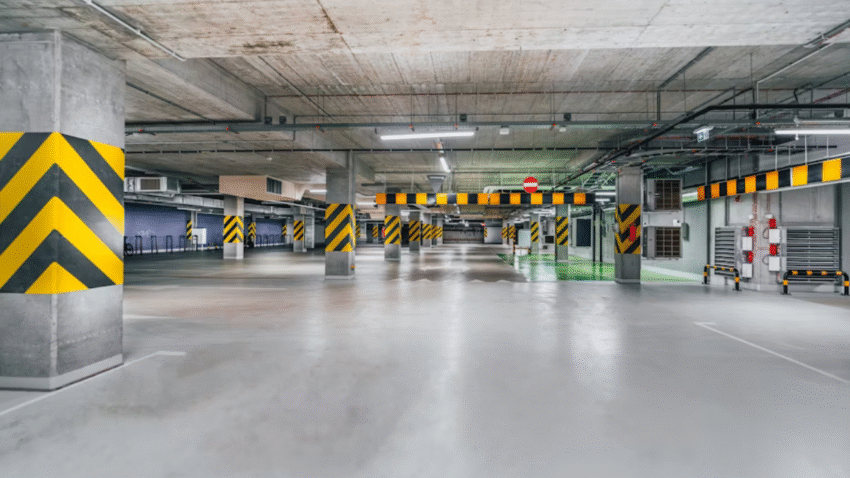Introduction
Your garage door opener is the hardworking motorized heart of your garage door system, raising and lowering the door countless times each year. But like any mechanical device, it needs regular attention to keep running smoothly. Learning how to maintain a garage door opener will help you avoid unexpected breakdowns, extend its lifespan, and keep your garage safe and secure. The good news? Most maintenance tasks are quick, easy, and require only basic tools.
Why Maintaining a Garage Door Opener Matters
A well-maintained opener delivers more than just convenience. Here’s why regular care is essential:
- Extends lifespan – Prevents premature wear and costly replacements.
- Improves safety – Ensures safety sensors and auto-reverse features work correctly.
- Reduces noise – Lubrication and adjustments help keep operation smooth and quiet.
- Enhances performance – Maintains lifting power and responsiveness.
- Saves money – Avoids expensive emergency repairs.
Neglecting maintenance can lead to mechanical strain, poor door alignment, and even complete motor failure.
Step-by-Step Guide to Maintaining a Garage Door Opener
1. Inspect the Opener and Door System
Every few months, visually inspect the entire opener setup:
- Check the motor unit for signs of wear, loose bolts, or frayed wires.
- Look at the drive system—chain, belt, or screw—for wear or slack.
- Examine mounting brackets and tracks for secure attachment.
2. Test the Safety Features
Modern garage door openers include built-in safety mechanisms:
Auto-Reverse Function:
- Place a block of wood under the door.
- Close the door.
- It should automatically reverse when it contacts the object.
Photo Eye Sensors:
- Located near the base of the door tracks.
- Wave an object between them while the door is closing.
- The door should stop and reverse immediately.
If either test fails, adjust or repair before continuing.
3. Lubricate Moving Parts
Smooth operation depends on proper lubrication:
- Use a garage door lubricant or silicone spray (never WD-40).
- Lubricate the chain or screw drive (unless manufacturer specifies otherwise).
- Apply lubricant to door hinges, rollers, and springs.
- Wipe off excess to prevent dust buildup.
Note: Belt-drive openers usually don’t need lubrication.
4. Tighten Loose Hardware
The vibration of daily operation can loosen bolts, nuts, and screws:
- Use a wrench to snug up bolts on the opener unit, track brackets, and door hinges.
- Avoid over-tightening to prevent stripping threads.
5. Check and Adjust the Drive Chain or Belt
Over time, chains or belts can loosen, causing jerky movement or noise:
- Disconnect power.
- Locate the tension adjustment bolt on the opener.
- Tighten until there’s about ½ inch of slack in the middle.
- Don’t overtighten—too much tension can damage the motor.
6. Clean the Photo Eye Sensors
Dirt or cobwebs can block the sensors:
- Use a soft cloth and mild cleaner to wipe the lenses.
- Ensure they are aligned—both should point directly at each other.
7. Replace Remote and Keypad Batteries
Weak batteries can cause inconsistent operation:
- Replace remote batteries annually or when range decreases.
- For keypads, replace batteries as per manufacturer’s instructions.
8. Test Door Balance
An unbalanced door puts strain on the opener:
- Disconnect the opener with the manual release cord.
- Lift the door halfway and let go.
- If it stays in place, it’s balanced. If it falls or rises, the springs may need adjustment by a professional.
9. Keep the Opener Clean
Dust and debris can get into vents and moving parts:
- Use a soft brush or vacuum to clean around the motor unit.
- Avoid spraying cleaners directly onto the opener.
10. Schedule Annual Professional Service
Even with regular DIY care, a yearly professional inspection ensures all components—especially high-tension springs—are in top condition.
Common Mistakes to Avoid
- Skipping safety checks
- Mistake: Not testing auto-reverse and photo eye functions.
- Solution: Test safety features every month.
- Using the wrong lubricant
- Mistake: Applying WD-40, which removes rather than adds lubrication.
- Solution: Use lithium-based or silicone garage door lubricants.
- Ignoring unusual noises
- Mistake: Hoping grinding or squealing sounds will go away.
- Solution: Investigate and fix the source immediately.
- Over-tightening the chain or belt
- Mistake: Pulling the drive too tight, damaging gears and motor bearings.
- Solution: Keep slight slack per manufacturer guidelines.
- Neglecting door maintenance
- Mistake: Maintaining the opener but ignoring the door’s balance and hardware.
- Solution: Treat the opener and door as one system.
Extra Garage Tips & Hacks
- Use surge protection – Protect your opener from power surges with a quality surge protector.
- LED lighting upgrade – Many openers allow LED bulbs for brighter, energy-efficient lighting.
- Quiet operation hack – Rubber vibration isolators can reduce motor noise.
- Related read: Check out our guide on maintaining garage door tracks for smoother movement.
Conclusion
Maintaining your garage door opener doesn’t require advanced skills—just regular attention and a few basic tools. By inspecting, lubricating, tightening, and testing safety features, you can keep your opener working smoothly, safely, and quietly for years.
Pro Tip: Add garage door opener maintenance to your seasonal home checklist—spring and fall are perfect times to make sure it’s ready for changing weather conditions.
